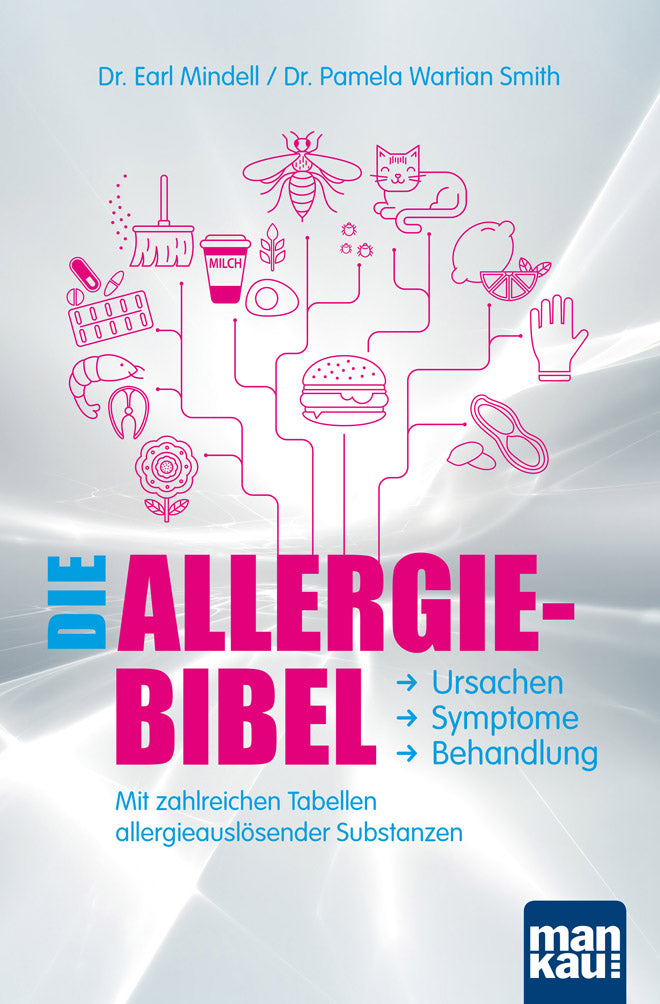
The allergy epidemic: number of allergy sufferers increases dramatically
The allergy epidemic: number of allergy sufferers increases dramatically
Modern man spends 90 percent of his time indoors. It is no wonder that indoor and work-related allergies, which were once rare, are becoming more and more common. Dr. Earl Mindell and Dr. Pamela Wartian Smith , authors of the fundamental work "The Allergy Bible" , have studied the subject in detail and have sound advice on how allergic reactions can be effectively alleviated and brought under control in the long term through appropriate measures.
Animal hair allergies: The fur is not the problem
"Contrary to popular belief, people who are allergic to animals are not allergic to their fur, but to their dander, the small skin particles that the animal sheds, and to the proteins in the air from animal saliva or urine," explain pharmacist Dr. Mindell and physician Dr. Wartian Smith. So do allergy sufferers have to do without a beloved pet?
Except for the most serious cases, the experts can give the all-clear: There are many possible solutions for allergy sufferers to lead a healthy and happy life with their pets. Anyone who understands what an animal hair allergy is all about can also take the right measures, such as installing ventilation filters, avoiding fabric curtains and carpets, and setting up "animal-free" zones. "In many cases, the advantages of keeping pets outweigh the disadvantages of an animal hair allergy," say the authors.
A growing problem: workplace allergies
Being allergic to your work may sound like a joke, but for millions of people who suffer from it, it's no laughing matter. Most workers spend almost as much time at work as they do at home, so a work-related allergy can have devastating effects on their health.
"Over the past fifty years, workers have been exposed to many thousands of new chemicals in the workplace," warn Dr. Mindell and Dr. Wartian Smith. Just to give an example: almost twelve percent of all medical workers who have to wear latex gloves to protect themselves from infection have developed severe allergies to this substance.
So what should you do if you have developed a work-related allergy? "Usually, employees have no control over whether they come into contact with dangerous materials at work," the authors regret, "but their health can be seriously endangered if the substances in question are not quickly identified and eliminated." Among other things, it is important to ensure better ventilation, move the desk if necessary, or request appropriate protective equipment from the employer.
Food: allergy or intolerance?
In a "real" food allergy, the consumption of the allergen leads to the production of the antibody IgE, which in turn stimulates the release of histamine; in the case of an intolerance, this process does not occur. However, in both cases the same symptoms can appear, which are sometimes mild - a few sneezes, a slight scratchy throat - but can also be very severe and can even lead to anaphylactic shock.
The first, but often most difficult step for an allergy sufferer is to find out which part of their diet is the culprit. "Keep a food diary," recommend the book's authors, "record your food consumption, write down everything as precisely and in as much detail as possible." Once the "culprit" has been identified, it is important to avoid eating that food from then on.
Conventional medical and naturopathic therapies
There is now a wide range of options for both preventing and treating allergies, which Dr. Earl Mindell and Dr. Pamela Wartian Smith want to convey to the readers of their standard allergy work. They describe the common medical allergy treatments, present the best medications and 60 effective nutritional supplements, and also explain alternative healing methods such as yoga, homeopathy, acupuncture, hypnotherapy and breathing therapy.
"Those who only have mild allergy symptoms will find that the medication can be significantly reduced or perhaps not needed at all," the authors encourage. And allergy sufferers who suffer from more severe symptoms can at least hope for a significant improvement.
Book tip:
Mindell, Dr. Earl / Smith, Dr. Patricia Wartian: The Allergy Bible. Causes – Symptoms – Treatment. Hardcover, 318 pages, 16.5 x 24 cm, 24.95 euros (D) / 25.70 euros (A), ISBN 978-3-86374-461-8.
Link recommendations:
More information about the guide book "The Allergy Bible"
To the reading sample in PDF format
More about the author Dr. Patricia Wartian Smith
More about the author Dr. Earl Mindell











